Model crematorium II – Birkenau Sculptural model of gas chamber and crematorium #2 at Auschwitz-Birkenau
White, plaster of Paris, 1:15 sculptural model of Crematorium II and a gas chamber at Auschwitz-Birkenau (Auschwitz II) killing center, commissioned by the United States Holocaust Memorial Museum, and created between 1989 and 1992 by Mieczyslaw Stobierski. “Model crematorium II – Birkenau” illustrates the entire process that killed 1.1 million people at the Auschwitz camp complex. While the model is technically accurate in the architectural construction, Stobierski employed more creative interpretation with the figures. This sculpture is one of three replicas of a model he originally made in 1948, for the museum at Auschwitz (the other replicas are at the Deutsches Historisches Museum in Berlin, and the Yad Vashem Museum in Jerusalem). On September 1, 1939, Germany invaded and occupied the western half of Poland. The Soviet Union occupied the other half of Poland, until they too were invaded by Germany in June 1941. A non-Jew, Stobierski stayed in his hometown of Śladów, Poland, during the Nazi occupation and was involved in underground activities, illustrating publications, and copying and processing illegal documents. In October 1941, imprisoned forced-labors began construction of Auschwitz II, and the SS moved the killing operations there in early 1942. Four large crematoria were built between March and June 1943, and each included a disrobing area, a gas chamber, and crematory ovens. The killing operations continued until November 1944, and the SS dismantled the facilities in advance of the arrival of Soviet forces in January 1945. On June 14, 1947, a museum was opened on the site of the former Auschwitz camp and Stobierski was contracted to create a series of sculptures that illustrated the killing and mistreatment of camp prisoners. Prior to creating each sculpture, he studied documents, consulted former prisoners, listened to interrogations, and examined artifacts owned by the museum. Though constructed with a high level of accuracy, Stobierski’s primary goal was to focus on the emotional experiences of the prisoners and to provoke an emotional response, leaving a shocked impression on the viewer. No restrictions on access Mieczyslaw Stobierski (1914-1998) was the youngest of six children born to Jacenty (?-1925) and Marianna Stobierski, who ran an agricultural farm in Śladów, Poland. His father died when Mieczyslaw was eleven, and his mother took over management of the farm. Mieczyslaw developed his artistic talents early, exhibiting clay carvings at the Muzeum Etnograficznego w Krakowie (Ethnographic Museum of Krakow) at age thirteen. In 1931, he received a scholarship to study sculpture at the Panstwowej Szkole Sztuk Zdobniczych I Przemyslu Artystycznego w Krakowie (State School of Decorative Arts and the Artistic Industry in Krakow). As a student, Mieczyslaw was able to postpone his compulsory military service until the summer holidays. After graduating in 1937, Mieczyslaw worked with the renowned sculptor Jan Raszka and was commissioned to work on church altars and sacred art. In 1939, he was appointed to the position of Cadet in Kowel, located at the eastern border of the Second Polish Republic. On September 1, 1939, Germany invaded western Poland, prompting Britain and France to declare war on Germany. Two weeks later, the Soviet Union invaded eastern Poland, under a nonaggression pact (the Ribbentrop-Molotov Pact) with Germany. After Poland’s surrender, Mieczyslaw unsuccessfully attempted to immigrate to Romania, but was forced to return home to Sladów. There, he became involved in underground activities, illustrating publications, and copying and processing illegal documents. In 1941, he married Helena Michalik, with whom he had three sons. By the end of January 1945, Soviet forces had liberated Poland’s pre-war boundaries, and on May 9, Germany surrendered to the Soviets. After the war, Mieczyslaw settled in Krakow, about 50 kilometers south of Śladów. There, he met a former colleague, Tadeusz Myszkowskie, a former Auschwitz concentration camp prisoner who was, at the time, working at the museum established on the site of the former camp. Tadeusz took Mieczyslaw to Auschwitz for the first time in 1946, and introduced him to the museum’s first director, Tadeusz Wasowicz. The experiences that his friend endured significantly influenced the course of Mieczyslaw’s career. Wasowicz commissioned Mieczyslaw to create a sculpture, prior to obtaining approval from the Ministry of Culture and Art. This almost cost Wasowicz his job, but after meeting with the commission for over an hour, Mieczyslaw was commended on his work and permitted to continue. Between 1947 and 1955, he created a series of thirteen plaster sculptures for the newly established museum, illustrating the killing and mistreatment of adults and children imprisoned in the camp. The first three were documentary in nature, and in the rest he exhibited more artistic interpretation. Prior to creating each sculpture, he studied camp documents, consulted former prisoners, examined artifacts owned by the museum, and listened to the interrogations of the perpetrators in charge of Auschwitz. Though constructed with a high level of accuracy, Stobierski’s primary goal in these works was to focus on the emotional experiences of the prisoners, and to provoke an emotional, shocking impression on the viewer. In the 1990s, the United States Holocaust Memorial Museum in Washington, D.C., the Deutsches Historisches Museum in Berlin, and the Yad Vashem Museum in Jerusalem, contracted Mieczyslaw to create replicas of his “ModeI krematorium II – Brzezinka” for their permanent exhibitions.
- EHRI
- Archief
- us-005578-irn15575
- Stobierski, Mieczyslaw, 1914-1998.
- Concentration camps in art.
- Architectural Elements
Bij bronnen vindt u soms teksten met termen die we tegenwoordig niet meer zouden gebruiken, omdat ze als kwetsend of uitsluitend worden ervaren.Lees meer




